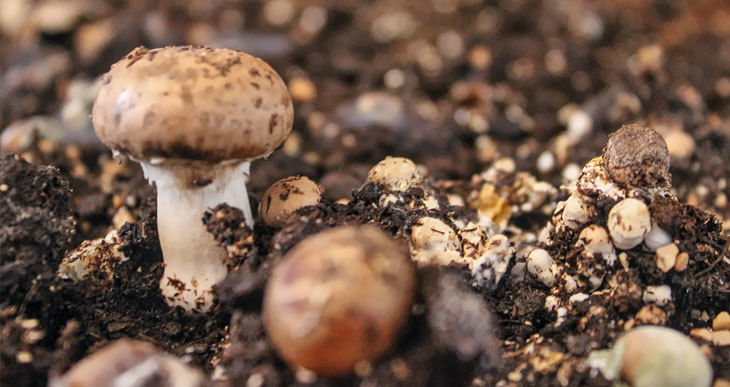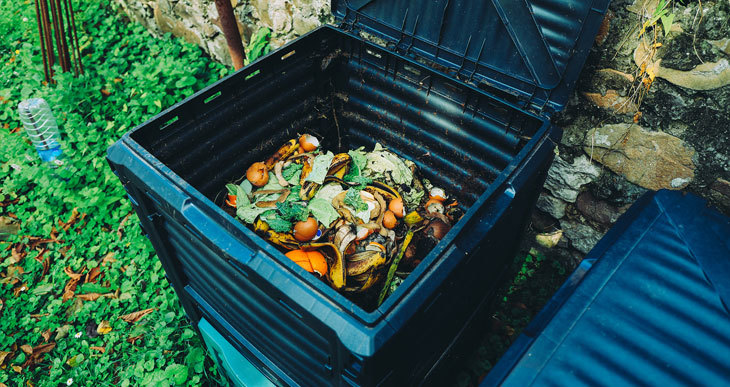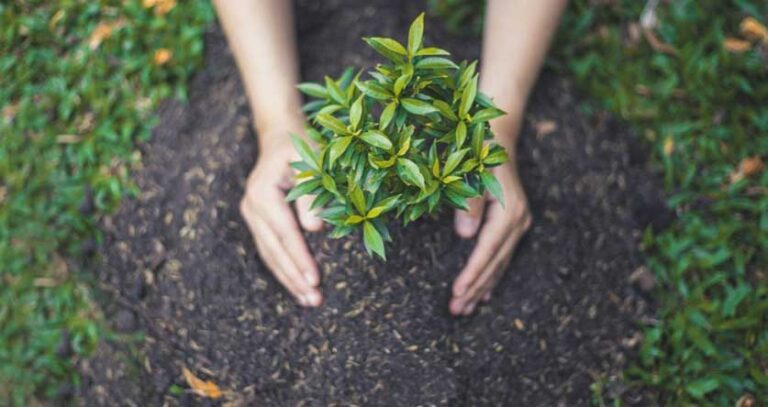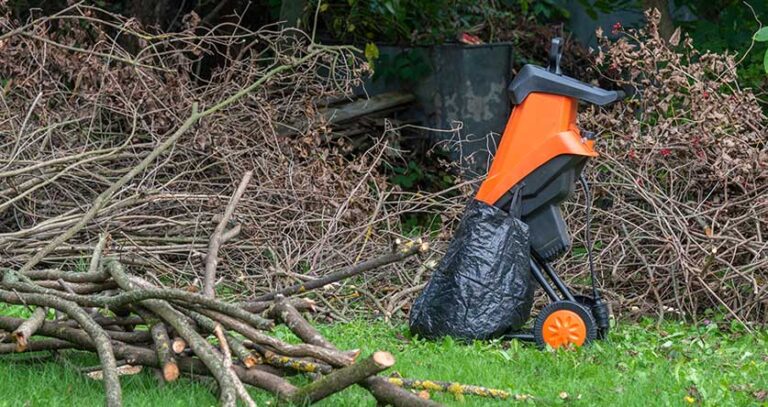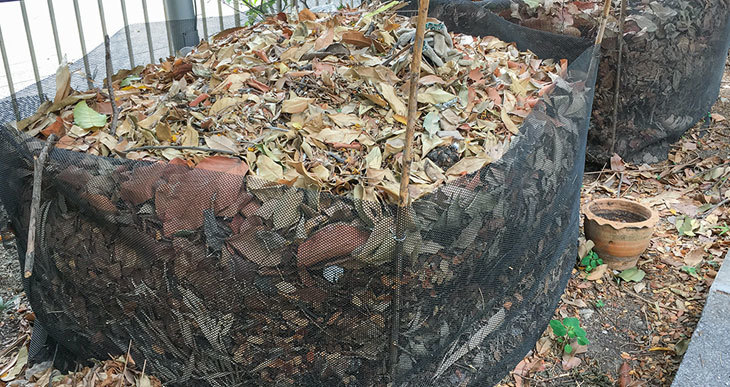What To Put In A Compost Tumbler? (Read This First)
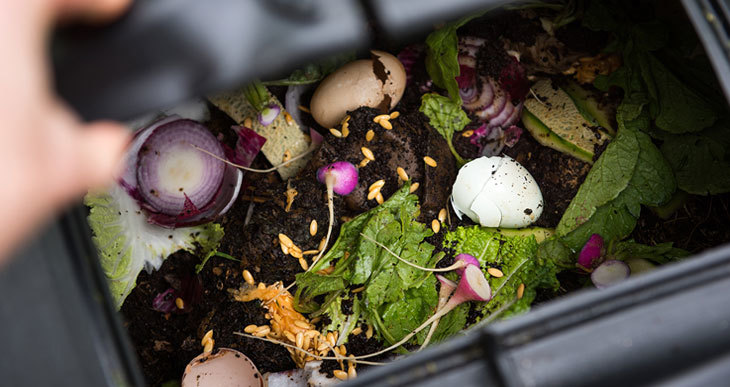
Compost tumblers are fast and convenient.
They are an excellent no-mess, no-fuss way to start composting or add to your traditional composting methods.
But depending on the type of tumbler you use, this can affect the ingredients you should put inside. So sometimes, you need to be a little more discerning!
If you want to know the right things to put in a tumbler, read on…
What To Put In A Compost Tumbler?
The ideal ingredients for tumblers is a mixture of brown and green waste. The brown materials can be unbleached paper, wood chips, and leaf litter. Green components include grass clippings, kitchen scraps, or coffee grounds. Certain types of food waste and manure should be added with caution.
As with most other composting systems, compost tumblers require a mix of green, nitrogen-rich components and brown, carbon-rich materials.
However, to get the compost tumbler to work efficiently and decompose everything in the chamber, there are some do’s and don’ts regarding what you should put inside.
This is primarily down to the design of the tumbler itself. For example, some have bigger chambers than others, while a few designs include insulation. These factors can influence the kind of things you can deposit into the compost mixture.
Most manufacturers will give you a manual that contains the items they recommend you include or exclude. While it is best to stick to the suggestions in the manual, most of the things to include will be common to all compost tumblers.
Here are some more details about what to put in your tumbler…
Green Components To Include In Your Compost Tumbler
Green ingredients are also sometimes termed “wet materials” since they contain moisture in the form of water or plant juices. They are also high in nitrogen, an essential component in compost.
Some of the more common green ingredients are as follows:
- Vegetable kitchen scraps. This is probably the most popular green component and can include vegetable peelings, cut-off ends, or leafy parts of vegetables you don’t eat. Also, you can add vegetables that have started to go mushy and are not fit for human consumption.
- Grass clippings. This is another favorite for the compost tumbler. Ensure you sprinkle the grass around inside the chamber to prevent clumping. Mixing them with “browns” also adds structure and allows air to circulate.
- Coffee grounds. Used coffee grounds are great for introducing nitrogen to the compost, especially when you lack other green materials.
- Tea leaves and tea bags. Tea leaves make for good compost material since there are no harmful chemicals in these products.
- Eggshells. Eggshells can take a little longer to break down, but they add valuable minerals to the final compost.
- Stale bread. Bread is helpful in a compost tumbler to help with the fermentation process. But be sure to mix them with dry brown materials to avoid things getting soggy.
- Livestock manure. Chicken, goat, and other manures introduce microorganisms that help break down the compost. They are high in nitrogen but are best reserved for tumblers that get hot. You should also be careful when adding the resulting compost to vegetable gardens since transferring pathogens is a risk.
Although manure is a beneficial ingredient in most cases, it does contain pathogens that carry some risks. If the compost isn’t cured correctly, there’s a possibility of harmful bacteria remaining in the finished compost. Some types of tumblers are insulated to create higher temperatures, such as the “Jora” brand of composting tumblers. Ensure you have a tumbler that heats up well if adding manures because this helps eliminate harmful pathogens. You can also position the tumbler in the sun to absorb heat energy.
Whatever you choose to put in the tumbler, chopping up or crushing these ingredients helps speed up the decomposition process.
This is because the materials will have a larger surface area for the composting microbes to work on.
So cut up your kitchen waste and crush eggshells before depositing them in the tumbler.
Brown Components To Include In Your Compost Tumbler
Brown materials add carbon to the compost mix. When combined with greens, this helps promote efficient decomposition.
These “brown” components are generally dead or dry organic waste. Things like shredded cardboard and wood chips are also high in carbon.
Carbonaceous ingredients have the added advantage of being absorbent. They can absorb moisture from a wet compost pile and help balance humidity levels. They also tend to have a coarse structure which provides air gaps and improves ventilation (oxygen is another crucial element in composting).
The following are the more common brown ingredients used in compost tumblers:
- Autumn leaves. Brown leaves are considered good brown compost material, and they add organic nutrients and humus.
- Small branches. Twigs and small branches that have dried out.
- Wood chips. Larger branches can be chipped and placed in the compost tumbler if you have a chipper or shredder like this one (Amazon).
- Untreated cardboard. This includes cardboard that is unprinted, uncolored, and uncoated such as egg cartons and packaging. It is usually brown in color. Do not use corrugated cardboard used in moving boxes. The adhesives used in these boxes are not suitable for your compost.
- Uncoated, unbleached paper. Newsprint paper, brown paper bags, and uncoated butcher paper make good compost material (bleached white paper can contain toxic compounds that are bad for compost microorganisms).
Like green materials, it will speed up the composting process if the brown components are chopped as small as possible. Sawdust also works well as a brown ingredient, but be careful not to use sawdust from any chemically treated wood.
Can you put meat in a compost tumbler?
It is generally not advised to add meat to a tumbler. This is because meat can become contaminated with harmful bacteria. However, suppose you choose to add meat. In that case, you need a compost tumbler that will heat up correctly so that the “thermal kill” will eliminate the harmful pathogens.
It takes an efficient compost tumbler system to compost meat or fish scraps. But some designs work better than others. Look for tumblers that have:
- A large chamber. Bigger volumes of compost will heat up better.
- An insulated container. The insulation contains the heat from the decomposition process.
The “Jora” brand of composting tumblers and the Mantis back porch compost tumbler both fulfill all these criteria.
You can also position your tumbler somewhere where it gets plenty of sunlight. This works better on dark-colored tumblers, which absorb solar energy more readily.
Composting meat in a tumbler will also work better in a warmer climate.
Can you put weeds in a compost tumbler?

If you choose to put weeds in a tumbler, make sure the weeds have already gone to seed. Or use a good active compost tumbler that heats up sufficiently to “thermally kill” the weed seeds.
The risk with composting weeds is the possibility that seeds will survive the composting procedure and contaminate garden beds with weeds when you come to use the finished compost.
A large thermally insulated tumbler is best for this.
Can you put bread in a compost tumbler?
Bread will decompose quickly in a tumbler and add a source of nitrogen. And because tumblers are closed containers, the bread will not attract animals or pests.
Break up any bread scraps into smaller pieces and spread the pieces around in the compost for best results.
Can you put cardboard in a compost tumbler?
Untreated cardboard can be included in a tumbler, but avoid adding white, bleached, or glossy cardboard. Treated cardboard is potentially harmful to the composting process.
Glossy printed paper and card don’t usually use vegetable dyes. The inks may be toxic to the helpful compost microorganisms. The same is true of white paper, which has been bleached. This contains dioxins which can hurt composting critters!
Should I Add Water To My Compost Tumbler?
Moisture content is a key ingredient in the composting process. If the compost seems too dry, you can add some water to improve the moisture content. Also, consider adding some additional green components to the mixture.
Green materials are naturally “wet” and will improve the moisture content.
To test the wetness of your compost, it should have the consistency of a wrung-out sponge when you squeeze some in your hand.
Can You Put Worms In A Compost Tumbler?
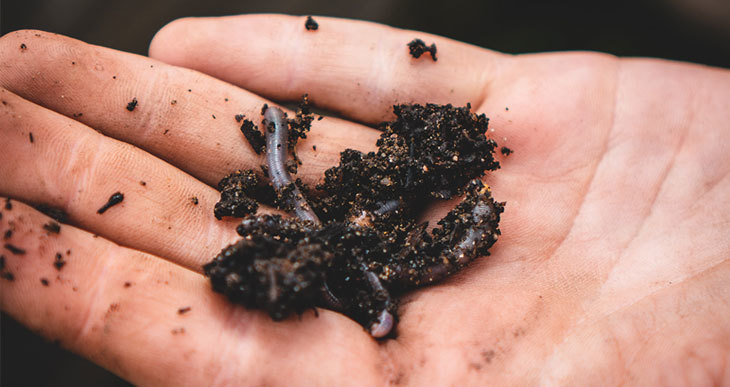
Worms are generally a good idea for composting using other composting methods, but compost tumblers are not suitable for worms.
Tumblers can get hot, particularly if they stand in the sun, which is the recommended location to position them. This high temperature can kill off the worms in the drum.
Worms do not like to be disturbed and will not be happy when you turn your compost tumbler!
It would be a bit like living in a clothes dryer!
They won’t like it!
And the survivors will probably flee via the air vents in the sides tumbler!
What To Put In a Compost Tumbler To Start?
How to start composting with a tumbler and what to put in at the beginning is a common question.
While it is not essential to use a starter in your tumbler, it can help kickstart the process and provide an ideal environment for the microbes in the compost to thrive.
You can use commercially available compost starters or use your own DIY versions to boost the process in the beginning.
- Old compost. A handful or two of well-matured compost introduces many beneficial microbes to the mix to kickstart the decomposition.
- Wine and beer. Leftover wine and beer make a great compost starter. The yeast in these drinks is useful for the microorganisms and helps break down the woodier brown components.
- Soil. Garden earth is teeming with valuable bacteria and can be helpful in a fresh batch of compost.
Should I Add Dirt To My Compost Tumbler?
You can add dirt to your compost tumbler as an alternative starter to kickstart the composting process. Use good-quality garden soil rich in microorganisms to add beneficial bacteria to a fresh compost mixture.
Any soil in your garden where plants are thriving and growing well can be used as a starter in your compost tumbler.
Toss a spade full of this good quality dirt into your compost tumbler when you first start to fill it with kitchen and garden waste to act as a starter.
Can You Keep Adding To A Compost Tumbler?
Most compost tumblers are not designed to be filled to the brim with material to compost. The user manual will indicate the limits to which you should fill the tumbler.
The general capacity rule is that you should only fill the tumbler to 75% of its total capacity. At this point, you should stop depositing new material in the compartment. The additional 25% space is needed to promote airflow throughout the mixture and make the tumbling process easier.
Do not add any new material to a compartment with maturing compost. The new material will slow the process down.
What Not To Put In A Compost Tumbler
The main ingredients you should leave out of your compost tumbler are the following:
- Fats and oils. Animal fat and vegetable oils do not decompose in compost. They become rancid and produce foul odors.
- Bones. Bones take a long time to decompose and should be left out of the compost tumbler.
- Plant material treaded with pesticides. These toxins will kill the microbes in the compost and contaminate your final compost product.
- Pet waste. Dog and cat waste can harbor disease-carrying bacteria and parasites that harm humans.
- Dairy products. It is not recommended to deposit milk, cheese, and yogurt in the compost tumbler. These products rot, causing foul odors and attracting unwanted vermin.
- Meat. Meat products rot slowly, produce foul odors, and attract flies. They also harbor bacteria and parasites.
Meat can be added if you’re sure you have a very active and hot tumbler since the heat will “thermally kill” the harmful organisms. But if you have any doubts, it is best not to put meat in your compost.
Most compost tumbler manufacturers have recommendations for products to leave out of the tumbler, which would also be a good guideline to follow.
Ratio Of Green To Brown In A Compost Tumbler
We have talked about the green and brown components that you should add to your compost tumbler, but what should the ratio of green to brown ingredients be?
There is much controversy and wide-ranging opinions on the best ratio of green to brown ingredients in a compost tumbler. Your compost tumbler manufacturer will also offer information in the instruction manual for the best ratios they recommend for their product.
In my experience, composting is a trial and error process, and you don’t need to stick to exact ratios.
However, I recommend starting with a 50-50 ratio, with equal parts brown and green components.
If you see the compost seems a little too wet, and the juices begin to leak out of the compost tumbler, increase the brown component quota to soak up some of the excess moisture.
Likewise, if the compost seems too dry and the composting process has slowed down, try increasing the green component quota in the tumbler.
You will soon find a balance that suits your tumbler type the best!


